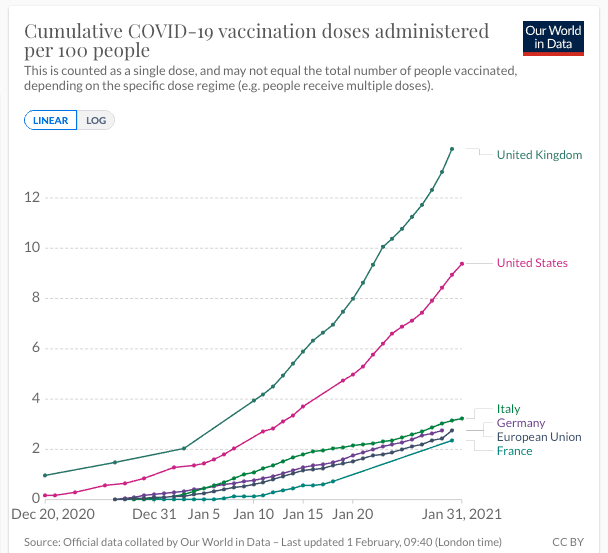Beware "Huge Wave of Capitulation" in Euro-Dollar Rate says Trader

Image © Adobe Images
- EUR/USD spot at publication: 1.2080
- Bank transfer rates (indicative guide): 1.1660-1.1743
- FX transfer specialist rates (indicative): 1.1990
- More information on specialist rates, here
The Euro-to-Dollar exchange rate (EUR/USD) sits just above a key support level that if broken could open the door to notably lower prices, according to a professional foreign exchange trader we follow.
"EUR/USD is tracing out a textbook head and shoulders with low volatility," says Brent Donnelly, Spot Trader at HSBC in New York, citing the following chart:
Image courtesy of HSBC.
"Last year’s high was 1.2014 so that level is the last line of major support if we are still in an uptrend for EUR/USD. A break through 1.2000 should trigger a huge wave of capitulation from human and system traders," says Donnelly.
The Euro-Dollar exchange rate peaked at 1.2349 on January 06 before putting in a steady decline back to lows located around the 1.2050 area, placing it in within touching distance of a series of key technical support levels that could be crucial in determining the outlook.
"Should EUR/USD break its current support level, expect some unwinding in EUR positioning which can cause spot to fall more so than normal. The next level of support is not seen until the 1.1900 area," says Bipan Rai, North America Head, FX Strategy at CIBC Capital Markets.
The Euro has come under pressure against the Dollar, Pound and other major currencies over the latter half of January, with some foreign exchange analysts saying the Eurozone's slow vaccine rollout puts its economy at a disadvantage to those where the rollout is faster.
A view held by scientists is that once a country reaches a vaccine-driven herd immunity then restrictions on movement and interactions can be lifted on a sustainable basis. The thesis driving markets over recent months is that 2021 would see a 'great unlock' of the global economy, which would lead to lower demand for the U.S. Dollar and higher demand for pro-growth assets such as stocks.
{wbamp-hide start} {wbamp-hide end}{wbamp-show start}{wbamp-show end}
A bounce-back in Eurozone economic activity was also assumed to be on the cards, allowing for a degree of Euro outperformance.
But, bottlenecks in the distribution and production of vaccines and accusations of a bungled procurement process in the EU means the bloc is lagging its peers, putting its economies at risk of fully reopening later than the UK and U.S.
"I still think we're in for choppy G10FX markets for a few more weeks. And while my bias is to ignore economic data which mostly reflect where countries are in the Covid lockdown cycle, the clear trend is still going to be one of U.S. outperformance relative to Europe. EUR/USD has traded 1.2050-1.22 since mid-January and there's more danger of the downside breaking than the top this week," says Kit Juckes at Société Générale.
"EUR/USD fell under 1.2100 during the European session. Logistical problems with vaccine distribution in the Eurozone is weighing on EUR. The ECB projects Eurozone real GDP to decline by 2.2% in Q4 2020 and higher frequency data suggests another contraction over Q1 2021 is increasingly likely," says Elias Haddad at CBA.
The Dollar rose alongside rising stock markets at the start of the new week and month, a correlation that has baffled some market watchers.
The general rule of thumb is that rising stock markets are indicative of 'risk on' sentiment amongst investors, and a flow out of dollars into stocks and other financial assets duly takes place, sending the USD lower.
But, a higher Dollar and higher equity market would suggest a break in correlation and therefore has the potential to throw forecasts for Dollar exchange rates in 2021 out the window.
"Cross-asset correlations are becoming distorted - although equity futures rebound, the broad based USD climbs higher, with DXY nearing the 90.95 resistance level. While volatility in equities have risen, FX volatility remains relatively benign. Expect cross asset correlations to remain distorted in the near term," says Rai.
The distortion could rest with the unusual behaviour of markets of late, where hordes of small retailer traders have targeted specific stocks and assets to try and disrupt existing order structures and trigger massive price rises.
The knock-on effect was a broader deleveraging of risk by major institutional investors and hedge funds, leading to lower markets.
Foreign exchange analysts agree that the impact on currencies was relatively benign, hinting at an equities-specific occurrence. Therefore, the current recovery on February 01 and 02 might not have the same impact on the Dollar that would be typically expected.
Once the positioning issues are cleared and the excitement concerning the retail swarms passes, the old order of Dollar-Euro-equity correlations will likely reestablish.







